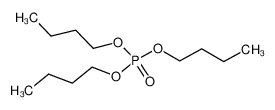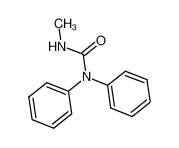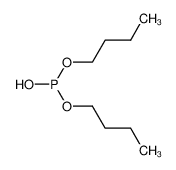| Product name | Dibutyl phosphate |
|---|
| Product number | - |
|---|---|
| Other names | Phosphoric acid dibutyl ester |
| Identified uses | For industry use only. CBI,Lubricants and lubricant additives,Paint additives and coating additives not described by other categories,Processing aids, specific to petroleum production |
|---|---|
| Uses advised against | no data available |
| Company | MOLBASE (Shanghai) Biotechnology Co., Ltd. |
|---|---|
| Address | Floor 4 & 5, Building 12, No. 1001 North Qinzhou Road, Xuhui District, Shanghai, China |
| Telephone | +86(21)64956998 |
| Fax | +86(21)54365166 |
| Emergency phone number | +86-400-6021-666 |
|---|---|
| Service hours | Monday to Friday, 9am-5pm (Standard time zone: UTC/GMT +8 hours). |
Skin corrosion, Category 1A
Serious eye damage, Category 1
Carcinogenicity, Category 2
2.2 GHS label elements, including precautionary statements| Pictogram(s) |   |
|---|---|
| Signal word | Danger |
| Hazard statement(s) | H314 Causes severe skin burns and eye damage H351 Suspected of causing cancer |
| Precautionary statement(s) | |
| Prevention | P260 Do not breathe dust/fume/gas/mist/vapours/spray. P264 Wash ... thoroughly after handling. P280 Wear protective gloves/protective clothing/eye protection/face protection. P201 Obtain special instructions before use. P202 Do not handle until all safety precautions have been read and understood. |
| Response | P301+P330+P331 IF SWALLOWED: Rinse mouth. Do NOT induce vomiting. P303+P361+P353 IF ON SKIN (or hair): Take off immediately all contaminated clothing. Rinse skin with water [or shower]. P363 Wash contaminated clothing before reuse. P304+P340 IF INHALED: Remove person to fresh air and keep comfortable for breathing. P310 Immediately call a POISON CENTER/doctor/… P321 Specific treatment (see ... on this label). P305+P351+P338 IF IN EYES: Rinse cautiously with water for several minutes. Remove contact lenses, if present and easy to do. Continue rinsing. P308+P313 IF exposed or concerned: Get medical advice/ attention. |
| Storage | P405 Store locked up. |
| Disposal | P501 Dispose of contents/container to ... |
none
3.Composition/information on ingredients 3.1 Substances| Chemical name | Common names and synonyms | CAS number | EC number | Concentration |
|---|---|---|---|---|
| Dibutyl phosphate | Dibutyl phosphate | 107-66-4 | none | 100% |
Consult a physician. Show this safety data sheet to the doctor in attendance.
If inhaledFresh air, rest.
In case of skin contactRemove contaminated clothes. Rinse and then wash skin with water and soap.
In case of eye contactFirst rinse with plenty of water for several minutes (remove contact lenses if easily possible), then refer for medical attention.
If swallowedRinse mouth. Do NOT induce vomiting. Give one or two glasses of water to drink. Refer for medical attention .
4.2 Most important symptoms/effects, acute and delayedExposure Routes: inhalation, ingestion, skin and/or eye contact Symptoms: Irritation eyes, skin, respiratory system; headache Target Organs: Eyes, skin, respiratory system (NIOSH, 2016)
4.3 Indication of immediate medical attention and special treatment needed, if necessaryno data available
5.Fire-fighting measures 5.1 Extinguishing media Suitable extinguishing mediaExcerpt from ERG Guide 153 [Substances - Toxic and/or Corrosive (Combustible)]: SMALL FIRE: Dry chemical, CO2 or water spray. LARGE FIRE: Dry chemical, CO2, alcohol-resistant foam or water spray. Move containers from fire area if you can do it without risk. Dike fire-control water for later disposal; do not scatter the material. FIRE INVOLVING TANKS OR CAR/TRAILER LOADS: Fight fire from maximum distance or use unmanned hose holders or monitor nozzles. Do not get water inside containers. Cool containers with flooding quantities of water until well after fire is out. Withdraw immediately in case of rising sound from venting safety devices or discoloration of tank. ALWAYS stay away from tanks engulfed in fire. (ERG, 2016)
5.2 Specific hazards arising from the chemicalExcerpt from ERG Guide 153 [Substances - Toxic and/or Corrosive (Combustible)]: Combustible material: may burn but does not ignite readily. When heated, vapors may form explosive mixtures with air: indoors, outdoors and sewers explosion hazards. Those substances designated with a (P) may polymerize explosively when heated or involved in a fire. Contact with metals may evolve flammable hydrogen gas. Containers may explode when heated. Runoff may pollute waterways. Substance may be transported in a molten form. (ERG, 2016)
5.3 Special protective actions for fire-fightersWear self-contained breathing apparatus for firefighting if necessary.
6.Accidental release measures 6.1 Personal precautions, protective equipment and emergency proceduresUse personal protective equipment. Avoid dust formation. Avoid breathing vapours, mist or gas. Ensure adequate ventilation. Evacuate personnel to safe areas. Avoid breathing dust. For personal protection see section 8.
6.2 Environmental precautionsPersonal protection: filter respirator for organic gases and vapours adapted to the airborne concentration of the substance. Collect leaking and spilled liquid in sealable containers as far as possible. Cautiously neutralize spilled liquid. Then wash away with plenty of water.
6.3 Methods and materials for containment and cleaning up1. Ventilate area of spill or leak. 2. Collect for reclamation or absorb in vermiculite, dry sand, earth, or a similar material.
7.Handling and storage 7.1 Precautions for safe handlingAvoid contact with skin and eyes. Avoid formation of dust and aerosols. Avoid exposure - obtain special instructions before use.Provide appropriate exhaust ventilation at places where dust is formed. For precautions see section 2.2.
7.2 Conditions for safe storage, including any incompatibilitiesSeparated from strong oxidants and strong bases.
8.Exposure controls/personal protection 8.1 Control parameters Occupational Exposure limit valuesRecommended Exposure Limit: 10 Hr Time-Weighted Avg: 1 ppm (5 mg/cu m).
Recommended Exposure Limit: 15 Min Short-Term Exposure Limit: 2 ppm (10 mg/cu m).
Biological limit valuesno data available
8.2 Appropriate engineering controlsHandle in accordance with good industrial hygiene and safety practice. Wash hands before breaks and at the end of workday.
8.3 Individual protection measures, such as personal protective equipment (PPE) Eye/face protectionSafety glasses with side-shields conforming to EN166. Use equipment for eye protection tested and approved under appropriate government standards such as NIOSH (US) or EN 166(EU).
Skin protectionWear impervious clothing. The type of protective equipment must be selected according to the concentration and amount of the dangerous substance at the specific workplace. Handle with gloves. Gloves must be inspected prior to use. Use proper glove removal technique(without touching glove's outer surface) to avoid skin contact with this product. Dispose of contaminated gloves after use in accordance with applicable laws and good laboratory practices. Wash and dry hands. The selected protective gloves have to satisfy the specifications of EU Directive 89/686/EEC and the standard EN 374 derived from it.
Respiratory protectionWear dust mask when handling large quantities.
Thermal hazardsno data available
9.Physical and chemical properties| Physical state | colourless to pale yellow transparent liquid |
|---|---|
| Colour | Pale-amber liquid or oil |
| Odour | Odorless |
| Melting point/ freezing point | -13°C(lit.) |
| Boiling point or initial boiling point and boiling range | 138°C(lit.) |
| Flammability | Combustible LiquidCombustible. Gives off irritating or toxic fumes (or gases) in a fire. |
| Lower and upper explosion limit / flammability limit | no data available |
| Flash point | 196°C(lit.) |
| Auto-ignition temperature | 420°C |
| Decomposition temperature | no data available |
| pH | MODERATELY STRONG MONOBASIC ACID |
| Kinematic viscosity | no data available |
| Solubility | In water:insoluble |
| Partition coefficient n-octanol/water (log value) | log Kow = 2.29 (est) |
| Vapour pressure | 0.00141mmHg at 25°C |
| Density and/or relative density | 1.13 |
| Relative vapour density | (air = 1): 7.2 |
| Particle characteristics | no data available |
no data available
10.2 Chemical stabilityStable under recommended storage conditions.
10.3 Possibility of hazardous reactionsExtremely flammableDIBUTYL PHOSPHATE Is non-flammable, but combustible (flash point 188°C). Auto-ignition temperature is 420°C. Emits irritating or toxic fumes in a fire. Is a moderately strong acid obtained by the partial esterification of phosphoric acid. Reacts exothermically and vigorously with bases. Incompatible with strong oxidizing agents, alkali metals, heat, or plastic. Reacts with many metals liberating flammable/explosive hydrogen gas.
10.4 Conditions to avoidno data available
10.5 Incompatible materialsStrong oxidizers.
10.6 Hazardous decomposition productsWhen heated to decompositions it emits toxic fumes of /phosphorus oxides/.
11.Toxicological information Acute toxicity- Oral: LD50 Rat oral 3,200 mg/kg
- Inhalation: no data available
- Dermal: no data available
no data available
Serious eye damage/irritationno data available
Respiratory or skin sensitizationno data available
Germ cell mutagenicityno data available
Carcinogenicityno data available
Reproductive toxicityno data available
STOT-single exposureno data available
STOT-repeated exposureno data available
Aspiration hazardno data available
12.Ecological information 12.1 Toxicity- Toxicity to fish: no data available
- Toxicity to daphnia and other aquatic invertebrates: LC50 Daphnia magna (Water flea) 210 mg/L/24 hr
- Toxicity to algae: no data available
- Toxicity to microorganisms: no data available
AEROBIC: Dibutyl phosphate, present at 4.4 mg/L, reached 12% of its theoretical oxygen demand in 28 days using a municipal sludge inoculum in a closed bottle test(1).
12.3 Bioaccumulative potentialAn estimated BCF of 66 was calculated for dibutyl phosphate(SRC), using a water solubility of 1.72X10+4 mg/L(1) and a regression-derived equation(2). According to a classification scheme(3), this BCF suggests the potential for bioconcentration in aquatic organisms is moderate(SRC), provided the compound is not metabolized by the organism(SRC).
12.4 Mobility in soilThe Koc of dibutyl phosphate is estimated as 490(SRC), using a water solubility of 1.72X10+4 mg/L(1) and a regression-derived equation(2). According to a classification scheme(3), this estimated Koc value suggests that dibutyl phosphate is expected to have moderate mobility in soil. The estimated pKa of dibutyl phosphate is 0.88(4), indicating that this compound will primarily exist in anion form in the environment and anions generally do not adsorb more strongly to organic carbon and clay than their neutral counterparts(5). The sorption of organophosphorus compounds in soil depends on both organic matter and clay content of soil and the sorption increases as the pH of soil decreases(6).
12.5 Other adverse effectsno data available
13.Disposal considerations 13.1 Disposal methods ProductThe material can be disposed of by removal to a licensed chemical destruction plant or by controlled incineration with flue gas scrubbing. Do not contaminate water, foodstuffs, feed or seed by storage or disposal. Do not discharge to sewer systems.
Contaminated packagingContainers can be triply rinsed (or equivalent) and offered for recycling or reconditioning. Alternatively, the packaging can be punctured to make it unusable for other purposes and then be disposed of in a sanitary landfill. Controlled incineration with flue gas scrubbing is possible for combustible packaging materials.
14.Transport information 14.1 UN Number| ADR/RID: UN1718 | IMDG: UN1718 | IATA: UN1718 |
| ADR/RID: BUTYL ACID PHOSPHATE |
| IMDG: BUTYL ACID PHOSPHATE |
| IATA: BUTYL ACID PHOSPHATE |
| ADR/RID: 8 | IMDG: 8 | IATA: 8 |
| ADR/RID: III | IMDG: III | IATA: III |
| ADR/RID: no | IMDG: no | IATA: no |
no data available
14.7 Transport in bulk according to Annex II of MARPOL 73/78 and the IBC Codeno data available
15.Regulatory information 15.1 Safety, health and environmental regulations specific for the product in question| Chemical name | Common names and synonyms | CAS number | EC number |
|---|---|---|---|
| Dibutyl phosphate | Dibutyl phosphate | 107-66-4 | none |
| European Inventory of Existing Commercial Chemical Substances (EINECS) | Listed. | ||
| EC Inventory | Listed. | ||
| United States Toxic Substances Control Act (TSCA) Inventory | Listed. | ||
| China Catalog of Hazardous chemicals 2015 | Not Listed. | ||
| New Zealand Inventory of Chemicals (NZIoC) | Listed. | ||
| Philippines Inventory of Chemicals and Chemical Substances (PICCS) | Listed. | ||
| Vietnam National Chemical Inventory | Listed. | ||
| Chinese Chemical Inventory of Existing Chemical Substances (China IECSC) | Listed. | ||
| Creation Date | Aug 10, 2017 |
|---|---|
| Revision Date | Aug 10, 2017 |
- CAS: Chemical Abstracts Service
- ADR: European Agreement concerning the International Carriage of Dangerous Goods by Road
- RID: Regulation concerning the International Carriage of Dangerous Goods by Rail
- IMDG: International Maritime Dangerous Goods
- IATA: International Air Transportation Association
- TWA: Time Weighted Average
- STEL: Short term exposure limit
- LC50: Lethal Concentration 50%
- LD50: Lethal Dose 50%
- EC50: Effective Concentration 50%
- IPCS - The International Chemical Safety Cards (ICSC), website: http://www.ilo.org/dyn/icsc/showcard.home
- HSDB - Hazardous Substances Data Bank, website: https://toxnet.nlm.nih.gov/newtoxnet/hsdb.htm
- IARC - International Agency for Research on Cancer, website: http://www.iarc.fr/
- eChemPortal - The Global Portal to Information on Chemical Substances by OECD, website: http://www.echemportal.org/echemportal/index?pageID=0&request_locale=en
- CAMEO Chemicals, website: http://cameochemicals.noaa.gov/search/simple
- ChemIDplus, website: http://chem.sis.nlm.nih.gov/chemidplus/chemidlite.jsp
- ERG - Emergency Response Guidebook by U.S. Department of Transportation, website: http://www.phmsa.dot.gov/hazmat/library/erg
- Germany GESTIS-database on hazard substance, website: http://www.dguv.de/ifa/gestis/gestis-stoffdatenbank/index-2.jsp
- ECHA - European Chemicals Agency, website: https://echa.europa.eu/






























